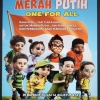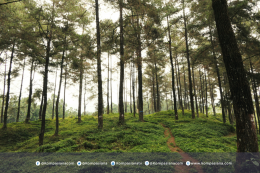Land preparation for rubber nurseries is a crucial and complex process that requires careful planning and implementation of best practices grounded in scientific research. By attending to soil characteristics, employing effective land management techniques, and monitoring environmental conditions, growers can optimize the conditions for rubber seedling growth and establish a foundation for productive rubber plantations. The combination of agronomic and ecological approaches not only enhances seedling performance but also promotes environmental sustainability, ensuring that rubber cultivation remains a viable economic activity for the years to come (Rahaman et al., 2020; Chiarelli et al., 2020).
References:
Ali, A., Fan, Y., Corre, M., Kotowska, M., Preuss-Hassler, E., Cahyo, A., ... & Knohl, A. (2022). Implementing a new rubber plant functional type in the community land model (CLM5) improves accuracy of carbon and water flux estimation. Land, 11(2), 183. https://doi.org/10.3390/land11020183
Alwis, W., Nakandala, S., & Zoysa, L. (2022). Effect of seed quantity on growth performance of rubber seedling plants and quality of planting material. Journal of the Rubber Research Institute of Sri Lanka, 102(1), 11-18. https://doi.org/10.4038/jrrisl.v102i1.1909
Bhattacharya, P. (2025). Land ownership and socio-economic dependence on rubber plantations: insights from smallholder farmers in Tripura, India. Journal of Land and Rural Studies, 13(2), 181-196. https://doi.org/10.1177/23210249251328798
Chiarelli, D., Passera, C., Rulli, M., Rosa, L., Ciraolo, G., & D'Odorico, P. (2020). Hydrological consequences of natural rubber plantations in Southeast Asia. Land Degradation and Development, 31(15), 2060-2073. https://doi.org/10.1002/ldr.3591
Deshpande, K., Kelkar, N., Krishnaswamy, J., & Sankaran, M. (2021). Stretching the habitat envelope: insectivorous bat guilds can use rubber plantations, but need understorey vegetation and forest buffers. Frontiers in Conservation Science, 2. https://doi.org/10.3389/fcosc.2021.751694
Lestari, N. and Noor'an, R. (2022). Carbon sequestration potential of rubber plantation in East Kalimantan. IOP Conference Series Earth and Environmental Science, 1109(1), 012102. https://doi.org/10.1088/1755-1315/1109/1/012102
Li, B., Yang, Y., Cai, J., Liu, X., Shi, T., Li, C., ... & Guixiu, H. (2021). Genomic characteristics and comparative genomics analysis of two chinese Corynespora cassiicola strains causing Corynespora leaf fall (CLF) disease. Journal of Fungi, 7(6), 485. https://doi.org/10.3390/jof7060485
Liyanaarachchi, L., Sankalpa, J., Ishani, P., Rathnayaka, A., Gayan, M., Wijesuriya, B., ... & Hetiarachchi, R. (2022). Annual soil loss assessment of smallholder rubber growing lands in the kalutara district, Sri Lanka using the rusle model in GIS. Journal of the Rubber Research Institute of Sri Lanka, 102(1), 43-54. https://doi.org/10.4038/jrrisl.v102i1.1913
Monkai, J., Purahong, W., Nawaz, A., Wubet, T., Hyde, K., Goldberg, S., ... & Harrison, R. (2022). Conversion of rainforest to rubber plantations impacts the rhizosphere soil mycobiome and alters soil biological activity. Land Degradation and Development, 33(17), 3411-3426. https://doi.org/10.1002/ldr.4395







